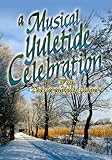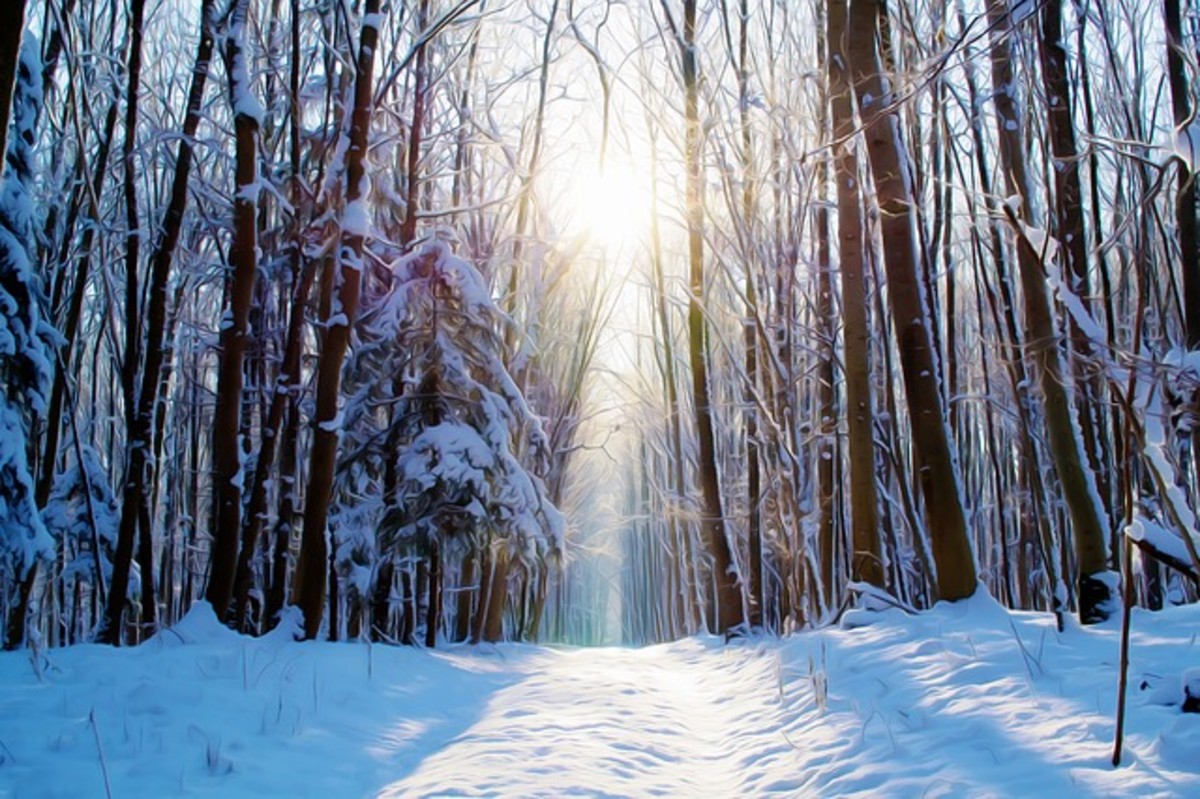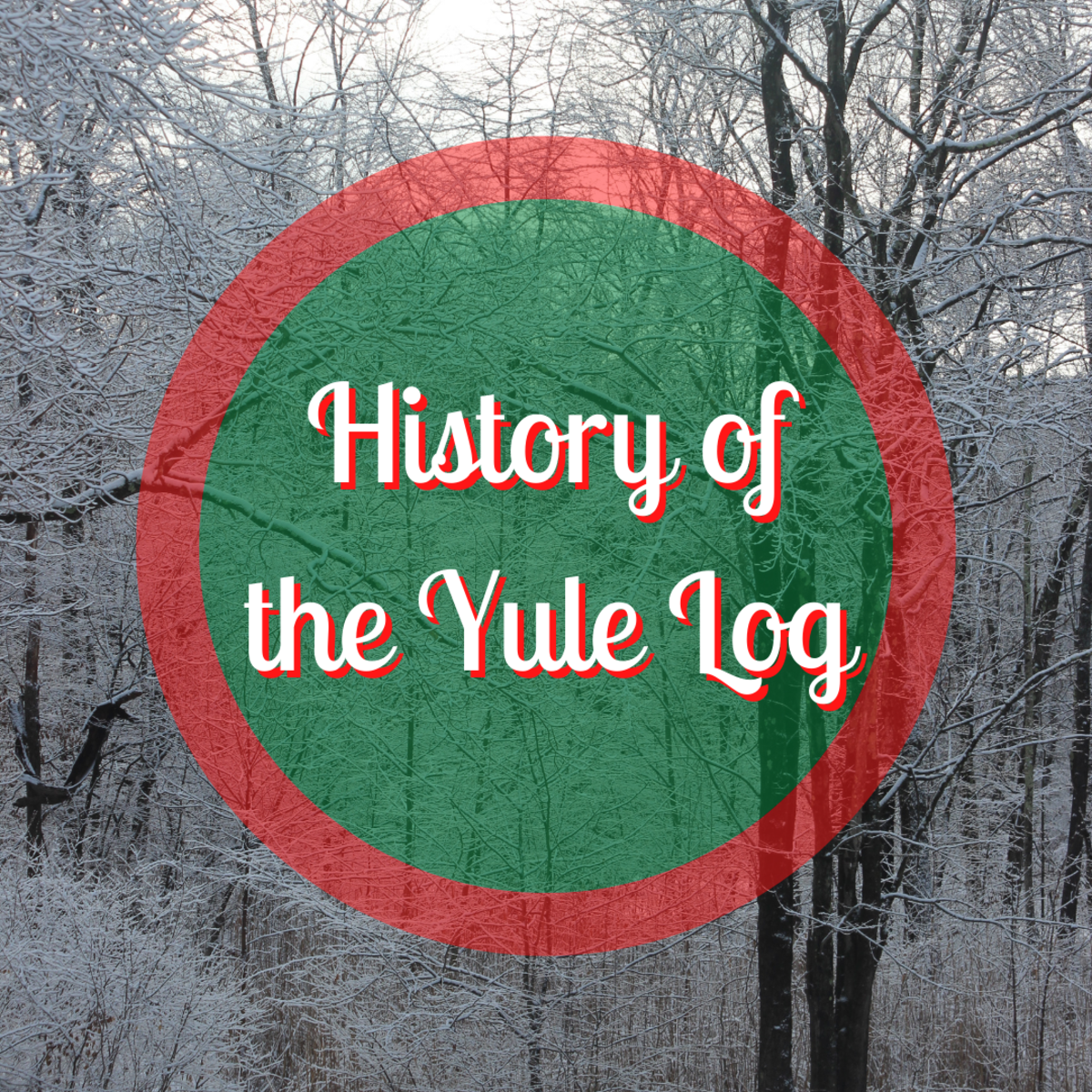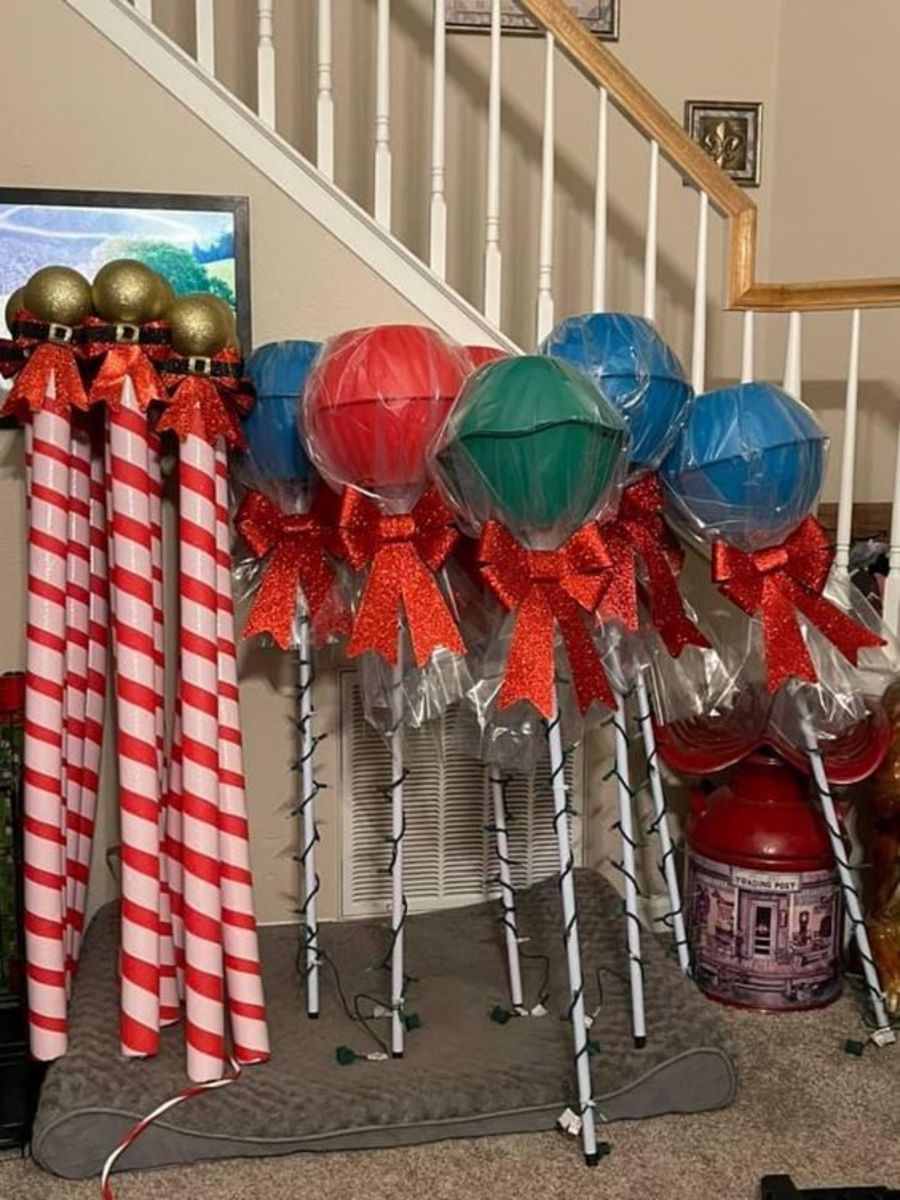Ancient Celebration Of The Winter Solstice: The Best Yuletide Ever
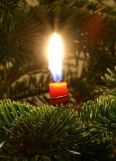
The Meaning of Yuletide
"A bayberry candle burned to the socket brings food to the larder and gold to the pocket."
Yule, also referred to as Yuletide, winter solstice, and Christmas, is a solar festival of pagan origin that marks the time when the days grow longer and the nights grow shorter. Yule begins on the Mother night and ends 12 days later; hence, the origin of the 12 days of Christmas. On this day, the Holly King, who is the ruler of the waning year, is overcome by the Oak King, who will rule the throne from Yule to Litha (midsummer). Yule is a time when family togetherness and love are celebrated, and when accomplishments of the past year are acknowledged and celebrated.
As a solar festival, Yule is celebrated by fire and the use of the Yule log. Seasonal colors associated with Yule are, not surprisingly, red and green. Red represents the menstrual blood of the female, while green represents the fertility of the growing season. Colors and yule logs are not the only things adopted by Christians as tradition, however. Delectable pastries, fancy breads, and wreaths made of holly are all customarily Pagan.
Read on to find out more information about the origins and traditions of Yuletide, including the Yule log, Yuletide carols, tribute to Thor, Yule log lore, the Yule goat, the Julenisse, sacred uses of Yuletide greenery, virtual Yule, and more.
______________________________________________________________________
Vintage Icelandic Yuletide Notecards - A Yule Card showing a young girl waking up on Christmas morning. Originally printed in Berlin, Germany, with English text. Used in Iceland, Christmas 1914. Available at the Ju Ju Shoppe.
FAQS About Yuletide
- FAQ: Yule celebrations at the winter solstice predate the conversion to Christianity.
- FAQ: Yule incorporates the Feast day of the pagan god Jul, when it was possible to couple with the spirits of the dead and with demons that returned to the surface of the earth.
- FAQ: In Germanic Neopagan sects, Yule is celebrated with gatherings that often involve a meal and gift giving.
- FAQ: In most Wiccan sects, this holiday is also celebrated as the rebirth of the Great God, who is viewed as the newborn solstice sun.
- FAQ: Yule is an important festival for Germanic neopagans, Wiccans and various secular groups who observe the holiday at the winter solstice (December 21 or 22 in the Northern Hemisphere, June 20 or 21 in the Southern Hemisphere).
A Yuletide Card showing three young angels, with a Christmas tree, on a new Moon. Originally printed in Germany, and used in Iceland, Christmas 1916. Available at the Ju Ju Shoppe.

Yuletide Ritual for the New Year
I can't remember where I got this from, so if it's yours let me know and I will gladly give you credit.
Yuletide Wish Ritual for the New Year
Place a piece of holly bush on your altar for the Yule celebration, in keeping with Pagan tradition. After the celebration, before dismissing the Quarters and taking down the Circle, write down a wish or wishes on pieces of parchment paper and tie them to the holly bush branches on your altar. You can write down as few or many wishes as you desire. However try to keep it simple. Bury the holly bush limb with your wishes attached to it during the next full moon, giving thanks to the Lord and Lady, to assure that your wishes will be realized during the coming year.
A Yule log is a large log which is burned in the hearth as a part of traditional Yule or Christmas celebrations in some cultures. It can be a part of the Winter Solstice festival or the Twelve Days of Christmas, Christmas Eve, Christmas Day, or Twelfth Night.
Burning a Yule log has long been a celebration of the winter solstice. In Scandinavia, Yule ran from several weeks before the winter solstice to a couple weeks after. This was the darkest time of year, and the people celebrated because days would start getting longer after the solstice. There was quite a bit of ritual and ceremony tied to the Yule log, for it marked the sun's rebirth from its southern reaches.
In the fourth century AD When Pope Julius I decided to celebrate Christmas around the Winter Solstice, the Yule log tradition continued, but the fire came to represent the light of the Savior instead of the light of the Sun.
References:
http://www.noelnoelnoel.com/trad/yulelog.html
Yulelog source Holiday Enterprises www.holidayenterprises.net
by Kevin Kahle
Yule Log Lore
- The Yule log brings good luck.
- Personal faults, mistakes and bad choices are burned in the flame so everyone's new year can start with a clean slate.
- The log is never allowed to burn out completely; a piece is kept in the house to start next years log.
- Pieces of Yule log that are kept protect a house from fire, or lightning, hail, and the malevolent powers of the devil.
- Ashes of the Yule log can be placed in wells to keep the water fresh.
- Ashes can be placed at the roots of fruit trees and vines to help them bear a good harvest.
- The Yule log can also predict bad luck. For example, tragedy will strike the home in the coming year if the fire goes out before morning. Or, if the Yule log's flame casts someone's shadow without a head, it is said that person will die within the year.
- Any trouble in lighting the Yule log is taken as a bad omen for the year ahead.
- It is extremely unlucky if the Yule log is touched by a barefooted woman or a squint eyed man.
- A flat-footed visitor to the house whilst the Yule log is burning is also a bad omen.
Originally, the Yule log may have been a custom in tribute to the Germanic god Thor, who was associated with oak trees amongst the ancient Germanic tribes. Since the custom has survived amongst the descendants of the Anglo-Saxons and Scandinavians, there appears to be a cultural connection between the modern practice of the Yule log and the ancient veneration of trees associated with Thor.
Great Yuletide Books on Amazon
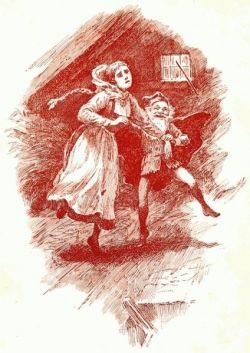
Yule Log TV and Video
It's amazing how traditions are developed, isn't it? A classic example of an ancient-turned-modern tradition is that of the Yule log TV or video. In the U.S., the Yule log has also become a modern tradition in the form of a TV screen in one's home showing video of an actual Yule Log burning in a real fireplace. The video is accompanied by Christmas music, actual crackling fire sounds, or both at the same time.
This is now a very popular trend on DVDs, but it began on a whim in 1966, by Fred Thrower, former TV programming director for WPIX in New York City, who wanted to offer a Yule Log for the majority in New York City who had no real fireplace of their own. It has been offered for several hours each year (on Christmas Eve and/or Christmas Day) as a video greeting card to viewers, and is syndicated across the U.S. Many others have offered their own versions over the years on TV, and in all video formats.
Virtual Yule Log - Video Fireplace
The Yule Goat is one of the oldest Scandinavian and Northern European Yule and Christmas symbols. Its origins might go as far back as to pre-Christian days, where goats where connected to the god Thor, who rode the sky in a wagon drawn by a pair of goats.
The function of the Yule Goat has differed throughout the ages. As far as until the 19th century, youths would go from house to house during Christmas time to perform small plays or sing Yule Goat songs, with one of the in the group dressed up as the Yule Goat. In Finland, the Yule Goat was originally said to be an ugly creature that frightened children, and demanded gifts at Christmas. During the 19th century its role shifted towards becoming the giver of Christmas gifts, in Finland as well as the rest of Scandinavia, with one of the men in the family dressing up as the Yule Goat. This tradition would have the goat replaced with the jultomte (Santa Claus) at the end of the century, and the tradition of the man-sized goat disappeared.
Presently, the Yule Goat is best known as a Christmas ornament, a figure, often made out of straw or roughly-hewn wood. In older Scandinavian society a popular prank was to place the Yule Goat in a neighbor's house without them noticing; the family successfully pranked had to get rid of it in the same way. The modern version of the Yule Goat figure is a decorative goat made out of straw and bound with red ribbons, a popular Christmas ornament often found under the Christmas tree. Large versions of this ornament are frequently erected in towns and cities around Christmas time - these goats tend to be set on fire before Christmas. The Gvle goat was the first of these goats, and remains the most famous as well as the most burnt down.
Source:
http://en.wikipedia.org/wiki/Yule_Goat
This image has been released into the public domain by its author, Christian Gidlf.
A julenisse is a mythical creature of Scandinavian folklore originating from Norse paganism. Tomte or Nisse were believed to take care of a farmer's home and children and to protect them from misfortune, particularly at night, when the housefolk were asleep.
The tomte/nisse was often imagined as a small, elderly man (size varies from a few inches to about half the height of an adult man), often with a full beard; dressed in the everyday clothing of a farmer. However, there are also folktales where he is believed to be a shapeshifter able to take a shape far larger than an adult man, and other tales where the tomte/nisse is believed to have a single, cyclopean eye. Since he was thought to be skilled in illusions with the ability to make himself invisible, one was unlikely to get more than a brief glimpse of him. The julenisse acquired similar characteristics as a red elf.
When I lived in Norway as a teenager, we were told to leave a bowl of oatmeal outside for the julenisse during Yuletide season on Christmas eve. This would make him happy and he would leave gifts. This tradition is not unlike the practice of leaving milk and cookies out for Santa.
Photo by Malene Thyssen, http://commons.wikimedia.org/wiki/User:Malene
Scandinavian Santa Claus
Yuletide Carols
The songs and carols of the Yuletide season have felt some of the strongest impact from Christianity. Many were banned and when they re-emerged, they did so laden with Christian symbolism and imagery. Many pagan originals no longer exist. Here a a couple of Yuletide carols, sans Christian mythology.
___________________________________________________
Holly Jolly Yuletide
Words and Music by Johnny Marks
Adapted by Susan M. Shaw
Have a holly jolly Yuletide
It's the best time of the year
I don't know if there'll be snow
But have a cup of cheer
Have a holly jolly Yuletide
And when you walk down the street
Say hello to friends you know
And ev'ryone you meet
Oh, ho, the mistletoe
Hung where you can see
Somebody waits for you
Kiss her once for me
Have a holly jolly Yuletide
and in case you didn't hear
Oh, by golly have a holly jolly Yuletide
This year!
____________________________________________________
Here We Come a Wassailing
(Note: Wassail is a hot spiced ale or sometimes wine containing sugar, often raisins, nutmeg or ginger, cinnamon, cloves, beaten eggs, and commonly had apples floating in it. The word derives from Was Heil (what hail) a toast. Wassailers would go from door to door with their capacious wassail bowl, singing and drinking a toast to those who offered them hospitality. The wassail bowl, of wood, silver, or gold, was often elaborately adorned with holly and ribbons. Source:
http://wonderfulthings.info/christmas/wassail.html...
Here we come a-wassailing among the leaves so green
Here we come a-wandering so fair to be seen
Love and joy come to you and to your wassail too
And we bless you and send you a happy New Year
And we send you a happy New Year
We are not daily beggars that beg from door to door
We are your neighbor's children whom you have seen before
Love and joy come to you and to your wassail too
And we bless you and send you a happy New Year
And we send you a happy New Year
We bless the master of this house, likewise the mistress, too
And all the little children that round the table go
Love and joy come to you and to your wassail too
And we bless you and send you a happy New Year
And we send you a happy New Year
____________________________________________________
Merry Solstice [traditional English, adapted]
We wish you a Merry Solstice, We wish you a Merry Solstice,
We wish you a Merry Solstice, and a Happy New Year!
Good tidings we bring to you and your kin,
We wish you a Merry Solstice, and a Happy New Year!
____________________________________________________
Deck the Halls [traditional Welsh Yuletide carol]
Deck the halls with boughs of holly, Fa-la-la-la-la, Fa-la-la-la.
'Tis the season to be jolly, Fa-la-la-la-la, Fa-la-la-la.
Don we now our gay apparel, Fa-la-la, Fa-la-la, Fa-la-la.
Troll the ancient Yuletide carol, Fa-la-la-la-la, Fa-la-la-la.
See the blazing Yule before us, Fa-la-la-la-la, Fa-la-la-la.
Strike the harp and join the chorus, Fa-la-la-la-la, Fa-la-la-la.
Follow me in merry measure, Fa-la-la, Fa-la-la, Fa-la-la.
While I tell of Yuletide treasure, Fa-la-la-la-la, Fa-la-la-la.
Fast away the old year passes, Fa-la-la-la-la, Fa-la-la-la.
Hail the new, ye lads and lasses, Fa-la-la-la-la, Fa-la-la-la.
Sing we joyous all together, Fa-la-la, Fa-la-la, Fa-la-la.
Heedless of the wind and weather, Fa-la-la-la-la, Fa-la-la-la.
Father Christmas
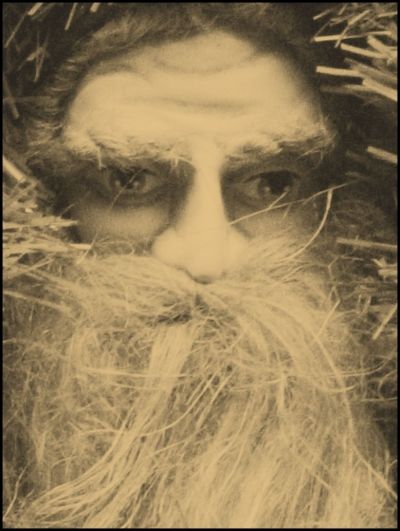
Awesome Yuletide Music
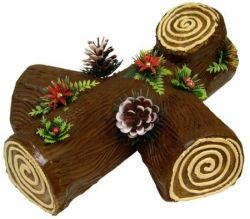
Yule Cake, Bche de Nol, and Julekake
The expression "Yule log" has also come to refer to log-shaped Christmas cakes, also known as "chocolate logs" or "Bche de Nol".
Bche de Nol is a traditional French dessert served during the Christmas holidays. As the name indicates, the cake is generally prepared, presented, and garnished so as to look like a log ready for the fire.
Great Yuletide Gifts
Yuletide Link List
- The Ashen Faggot
The Yule log is sometimes referred to as the Ashen Faggot. This site explains its origin and customs. - Christmas and Yuletide
Christmas and Yuletide Guide to Carolsfor Pagans, Christians, and celebrants of all other persuasions - Hark! The New Age Pagans Sing!
Songs of Yuletide joy for Pagans - Yuletide Care Packages for Pagan Soldiers in War Zones
Circle Sanctuary is sending pentacles, CDs, incense, and other items in Yuletide gift packages as spiritual support to Wiccan/Pagan troops serving in combat areas. - Winter Solstice Celebrations for Families and Households
This site gives details about how to celebrate the winter solstice in true pagan style.

Burning the Christmas Log
Come, bring with a noise,
My merry, merry boys,
The Christmas log to the firing;
While my good dame, she
Bids ye all be free,
And drink to your heat's desiring.
With the last brand
Light the new block, and
For good success in his spending
On your psaltries play
That sweet luck may
Come while the log is a-teending.
Drink now the strong beer,
Cut the white loaf here;
The while the meat is a-shredding
For the rare mince pie,
And the plums stand by
To fill the paste that's a kneading.
Robert Herrick
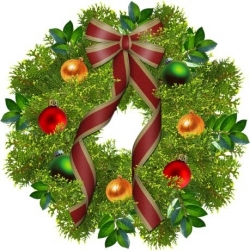
Sacred Uses of Yuletide Greenery
Wreath - symbolizing the wheel of the year; placed on doorways, walls, altars, other places
Rituals of selection, creation, placement, removal, burning at Imbolc, Summer Solstice, or other times
Yule Tree - symbolizing eternal life force & World Tree; decorated with lights, sun symbols, other symbols.Rituals of growing, selection, honoring tree spirit, placement, decoration, removal, offering or burning
Sprigs, Boughs, & Garlands - symbolizing the continuity of life; used to adorn homes, altars, other places. Rituals of cutting, arranging, removal, burning or mulching.
Mistletoe Amulet - symbolizing peace, friendship, affection; hung above door ways to protect home
Rituals of harvest, placement, home blessing, kissing under it for peace making, fun, good luck. Mistletoe is often an ingredient in multi-herbal kissing ball used in similar ways.
Yule Log Adornment - with Holly to symbolize old year passing & with other greens for continuity of life. Rituals of selection & placement on the Log, burning with the Log to welcome new solar year, good luck.
Greenery Circle Making - symbolizing the Circle of Life & Yule season; outline ritual circle with greens.Rituals of harvest, placement, later removal & use in sacred fires.
Evergreen Sprig Wand - symbolizing the Yuletide season, renewal, well-being. Rituals of harvest, uses for circle casting, purification, healing, energy directing, home blessing.
Sacred Fires - dried greenery symbolizing the season & specified intention such as release or attraction.
Rituals of fire starting, fire feeding, magic making.
Crowns - of Holly leaves symbolizing Holly King, Holly Boy, & Goddess; of Oak Leaves for the Oak King, of Ivy for Goddess, God, Ivy Girl; of a mixture of greens symbolizing Yuletide. Rituals of creating, crowning, invoking, offering, aspecting, thanksgiving, celebration.
Gifts - of living plants, herb teas, greens scented candles, motifs decorating cards, foods, music, art.
Rituals of creating, selection, gifting, thanksgiving, friendship renewal & love.
Greenery Meditation - using actual or visualized greenery symbolizing renewal of the Yuletide season.
Rituals of healing, guidance, seasonal celebration.
Source: http://www.gardnerian.de/artikel/selena/wsgreenery...



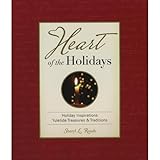
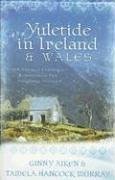
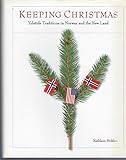

![Virtual Yuletide Fireplace [DVD]](https://m.media-amazon.com/images/I/51HAWGN1KDL._SL160_.jpg)


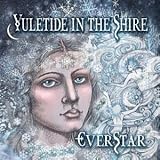


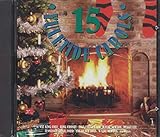


![Yuletide Fireplace [VHS]](https://m.media-amazon.com/images/I/71K8CC68CPL._SL500_.gif)
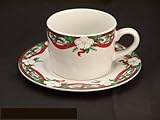

![Cartoon Network Christmas - Yuletide Follies [DVD]](https://m.media-amazon.com/images/I/51MFWKP4CFL._SL160_.jpg)
